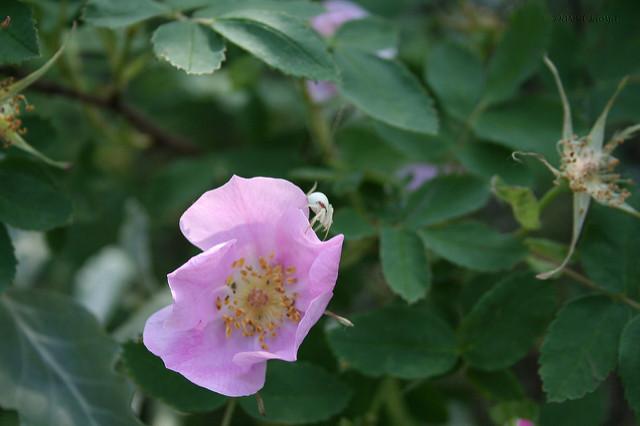By David Lloyd
When was the last time that you laid in the grass and watched the clouds drift by? For me, it was the afternoon of Sunday, July 8, 2018. If you want to know when the last time that I did that before July 8, I wouldn’t even be able to guess. When I posted about the experience on social media, that Sunday in July, someone commented that it sounded like I had been sauntering, and shared a link with me. It was an excerpt from John Muir that really resonated with me.
While on a hike in late spring this year, I pointed out to a visitor how prolific the wild roses were this year. They asked me if they smelled like regular roses. I was about to answer, but I paused… I couldn’t remember. ‘What did a wild rose smell like? When was the last time that I actually went and smelled one?’ So instead of making some excuse and then rushing off, we went over to a plant together and smelled the blooms. We discovered that the wild rose has a lovely fragrance. It was a good reminder to me that in my role as interpreter I don’t necessarily need to be rushing off to the next part of the script. We need to allow time for discovery - to give people the opportunity to connect with the landscape. We didn’t discover anything extra with the flower this time around, but one time when I stopped to photograph a wild rose while on a walk, the one that I happened to stop at had a small white spider stalking along the petals. I later discovered that it was a goldenrod spider Misumena vatia, which is known to feed on bees and other insects as they come to pollinate the flower.

This summer at Dinosaur Provincial Park, we offered a few night sky programs during the Perseid meteor shower in August. I tagged along on one of the nights because the spot that the program was happening was a great spot for night photography, not just looking at the night sky. The interpreter that was running our night sky Perseid program this year told me that she always has trouble with that sort of interpretive program because she is so used to doing a lot of talking on interpretive programs. I feel like the night sky program was an opportunity to allow people to connect with the night sky at their own pace. Provide some star charts, point out a few interesting features/constellations, occasionally call people who may be interested over to check out something cool in the telescope, but mostly just sit back and allow the visitors to facilitate their own experience.

So take time to smell the roses (or photograph them), lie back and watch the clouds drift by, find a spot with a good view of the sky and lose yourself in the stars. You never know what you’ll discover, and what you may inspire.
David Lloyd has worked in various interpretive roles since being hired as a seasonal interpreter in Banff National Park in 1999. He has been the Guided Excavation Coordinator at Dinosaur Provincial Park, for the last seven summers, where he teaches members of the public how to dig up dinosaurs and takes group hiking in the badlands of southern Alberta looking for fossils.

Sources:
A Parable of Sauntering: https://vault.sierraclub.org/john_muir_exhibit/life/palmer_sauntering.aspx
Goldenrod Spider information (Royal Alberta Museum): http://archive.li/5O2tC
Cloud Time Lapse: https://www.flickr.com/photos/davidwhlloyd/44531649354/in/dateposted-public/